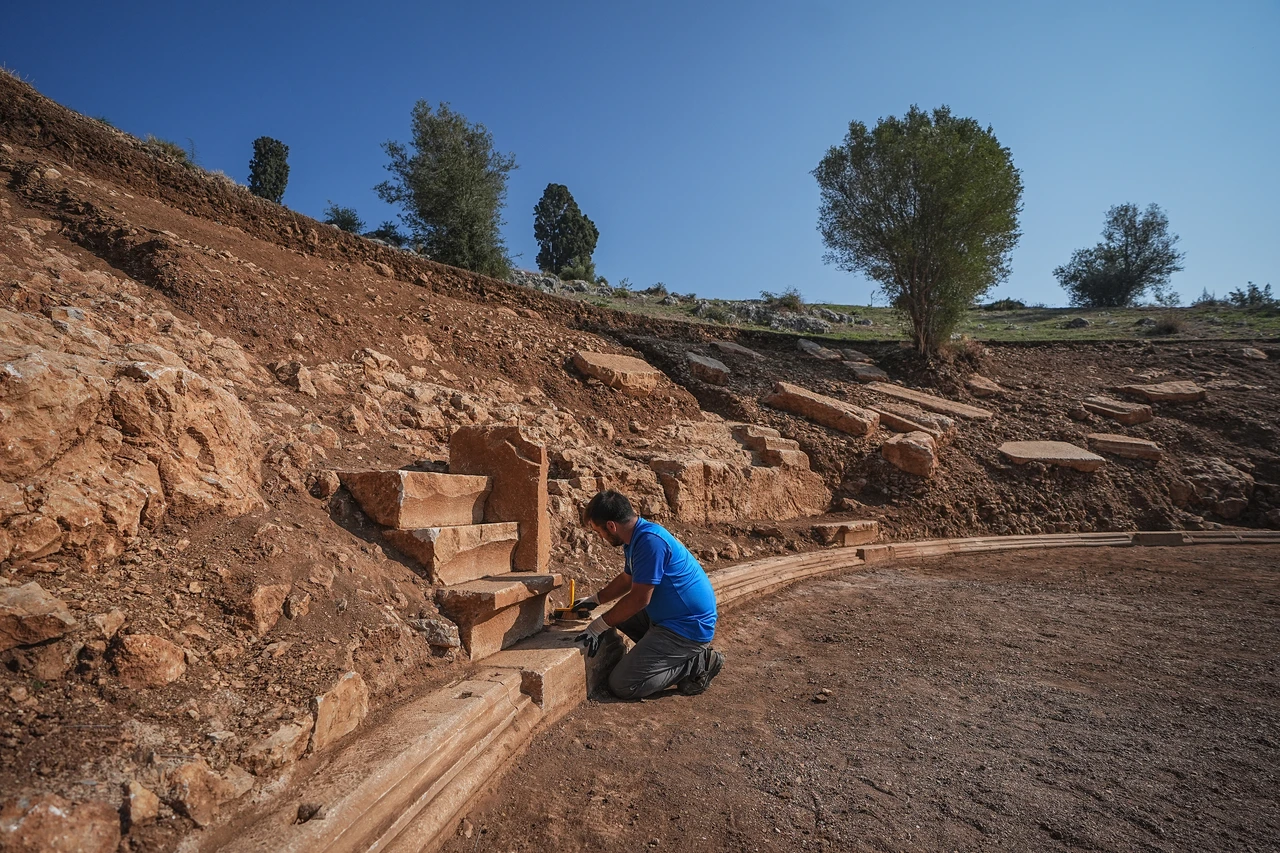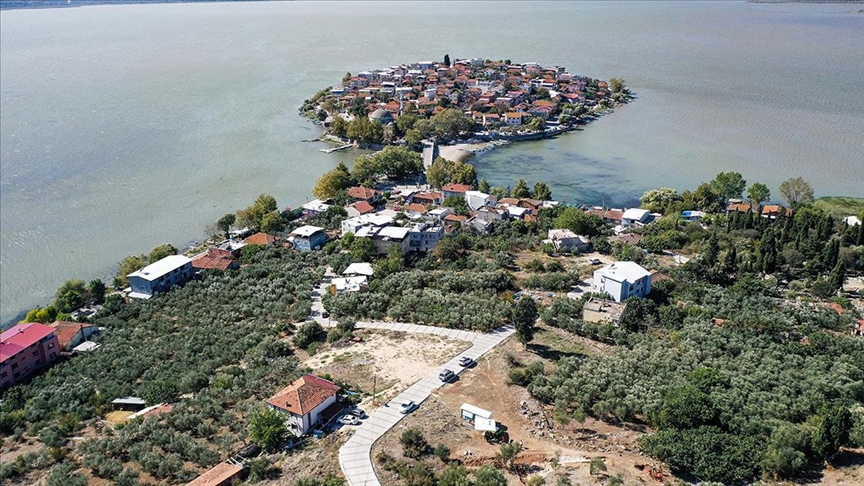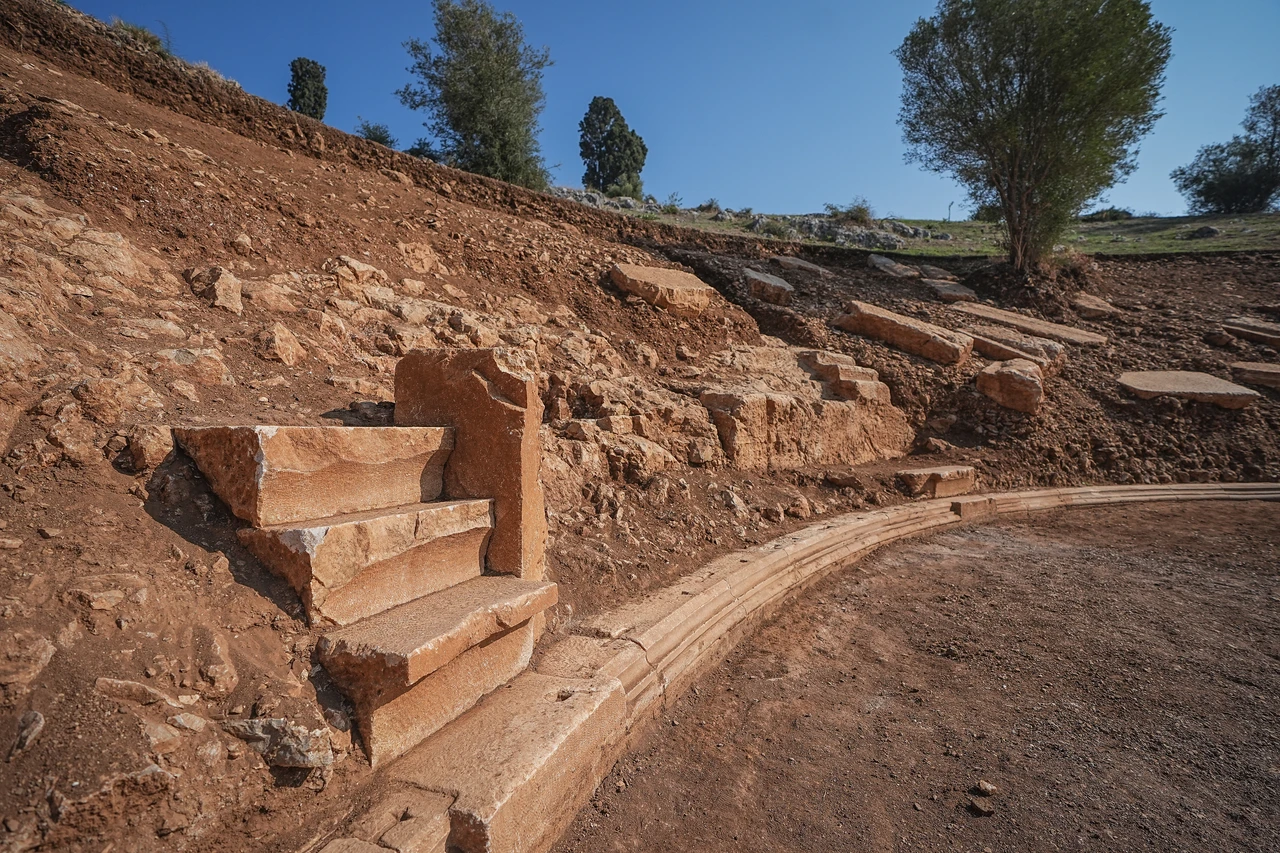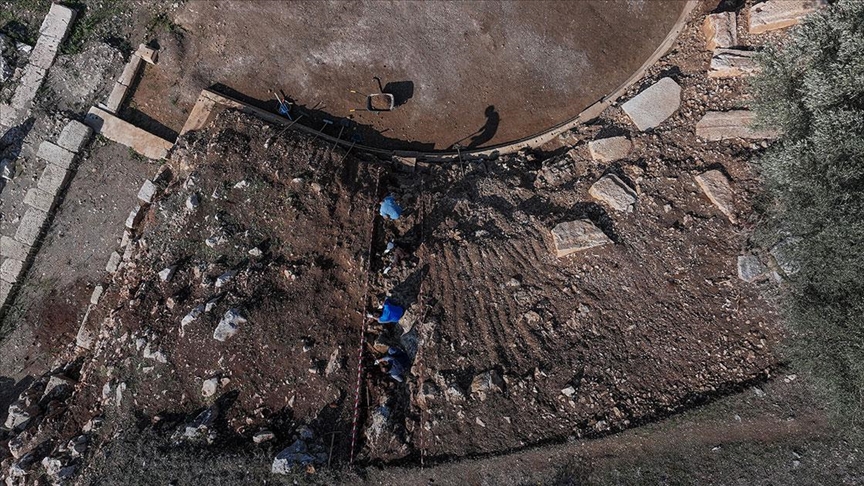
Apollonia ad Rhyndacum ancient city’s theater had a “private” spectator seating area
A reserved spectator seat for an individual has been discovered in the theater section of the Apollonia ad Rhyndacum archaeological site in the Nilüfer district of Bursa.
The name of the ancient city of Apollonia ad Rhyndacum is derived from Apollo, one of the important gods in Greek mythology, and means “Apollonia by the Rhyndakos.” The Rhyndakos is the river that feeds Lake Uluabat.
The ongoing excavations in the city, which turned into an important city-state especially in the Hellenistic period, are expected to shed light on this period.
The theater of the city was built on the slope of Zambaktepe, overlooking Lake Uluabat, at the end of the 4th century BC. The theater, which features VIP areas and box-like sections, is estimated to have a capacity of approximately 6,000 people.
📣 Our WhatsApp channel is now LIVE! Stay up-to-date with the latest news and updates, just click here to follow us on WhatsApp and never miss a thing!!

Prof. Dr. Derya Şahin, a faculty member of the Department of Archaeology at Bursa Uludağ University and the head of the excavation, stated, “Last year, we largely uncovered the orchestra area, found the seating rows, and partially opened the western parodos. This year, we are continuing our work in both the western parodos and the kavea (the area where the spectators sit).”

During the Roman period, the orchestra was surrounded by a parapet wall for safety reasons, particularly due to the display of violent gladiatorial games and animal fights.
Emphasizing that the seating arrangement in theaters is hierarchical, Şahin stated,

“The section at the bottom where people sit is called prohedria, which is the area for VIPs. As you move up from the bottom, you can see that people of decreasing importance are seated. We know that at the top, slaves and individuals of secondary importance would sit. It is also known that seating rows in theaters were reserved. There are examples from different studies in various cities regarding this. Here, we have identified an inscribed seating step. This step indicates not a specific profession but rather the presence of a special name. The existence of reserved areas in the theater is quite significant, such as a name like ‘Aitroy.’ However, we cannot complete it due to missing fragments.”
“It was very important to choose the location for the theater’s seating area at the beginning. The site of the theater was planned to face a nearby sea or lake, and, as in our example, it was built on a slope in Hellenistic theaters. They used materials from the nearby primary rocks at the construction site, sometimes leveling the bedrock to create a foundation. By using metals and employing connecting elements known as ‘tenon and mortise’ in ancient architecture, they linked the building stones together both horizontally and vertically.”
You may also like
- A 1700-year-old statue of Pan unearthed during the excavations at Polyeuktos in İstanbul
- The granary was found in the ancient city of Sebaste, founded by the first Roman emperor Augustus
- Donalar Kale Kapı Rock Tomb or Donalar Rock Tomb
- Theater emerges as works continue in ancient city of Perinthos
- Urartian King Argishti’s bronze shield revealed the name of an unknown country
- The religious center of Lycia, the ancient city of Letoon
- Who were the Luwians?
- A new study brings a fresh perspective on the Anatolian origin of the Indo-European languages
- Perhaps the oldest thermal treatment center in the world, which has been in continuous use for 2000 years -Basilica Therma Roman Bath or King’s Daughter-
- The largest synagogue of the ancient world, located in the ancient city of Sardis, is being restored











Leave a Reply